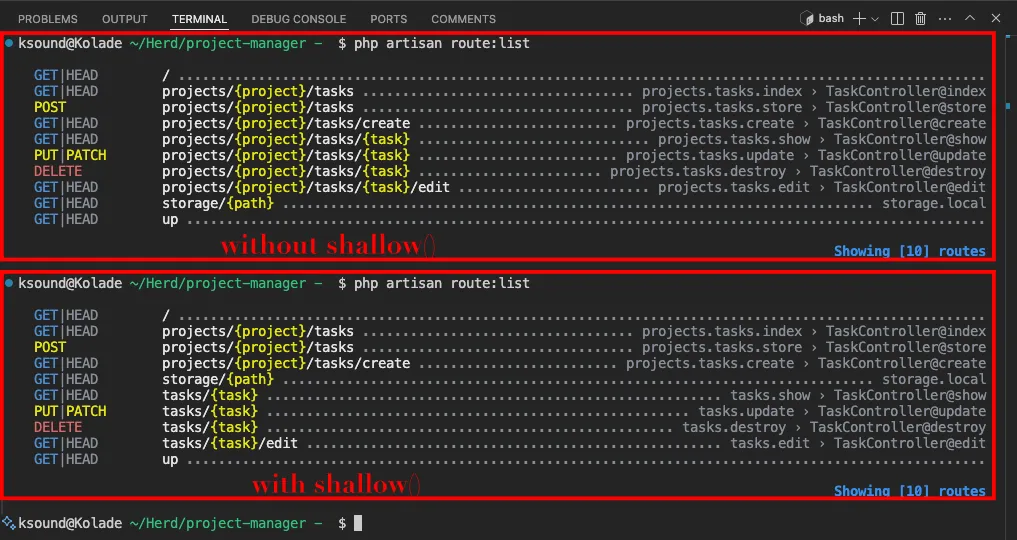What is the Laravel shallow() Function and How Do you Use it to Create Nested Routes?

Written by Kolade Chris | Mar 29, 2025 | #Laravel #PHP | 3 minutes Read
Often, nested routes get messy in Laravel applications. But Laravel has an answer for many of its problems, that’s why they introduced the shallow() function to help you manage nested routes more succinctly.
In this article, you will learn what the shallow() function is and how it makes your routes cleaner and easier to manage.
What is the Laravel shallow() Function?
In Laravel, the shallow() lets you define nested resource routes to reduce unnecessary repetition of parent resource identifiers in the URL. It creates a “shallow” version of nested routes, which ensures that only certain actions require the parent resource ID, while others use only the child resource unique ID.
Don’t get that yet?
Imagine you have a parent resource, say post and a child resource, say comments nested under it. By default, all child routes will include both the parent and child IDs, for example, /posts/{post}/comments/{comment}. Of if you’re working with project management routes, /projects/{project}/tasks/{task}.
That’s some repetition you can avoid!
To avoid that repetition, you can attach the shallow() function to that route to do two things:
- keep the parent ID only for routes that need it, like creating a post, or a comment for a project and creating project, or tasks for a project
- remove the parent ID for routes that don’t need it, like editing or deleting a task
How the Laravel shallow() Function Works
To use the shallow() method, you apply it to your nested route this way:
Route::resource('projects.tasks', TaskController::class)->shallow();When you do that, Laravel splits the nested routes into two groups for you:
-
parent + child routes for actions that depend on the parent route like:
GET /projects/{project}/tasksto list the tasks in a projectGET /projects/{project}/tasks/createto show the form for creating a task for a projectPOST /projects/{project}/tasksto create a task for a project
-
child-only routes for actions that only need the child like:
GET /tasks/{task}to show a taskGET /tasks/{task}/editto show the edit form for a taskPUT/PATCH /tasks/{task}to update a taskDELETE /tasks/{task}to delete a task
To put all that into an actual practice, I have a Project model and a Task model. The Project model has a one-to-many relationship with Task:
public function tasks() { return $this->hasMany(Task::class); }And Task has a belongsTo relationship with Project:
public function project(){ return $this->belongsTo(Project::class);}So, it makes sense to have this kind of route in my routes/web.php file:
Route::resource('projects.tasks', TaskController::class);With this route, here’s what I get when I run php artisan route:list to see the routes I have in the project:

You can see I have long routes like these:
DELETE projects/{project}/tasks/{task}PUT|PATCH projects/{project}/tasks/{task}To avoid that, I will add the shallow() function to the route this way:
Route::resource('projects.tasks', TaskController::class)->shallow();Now this is what my routes look like:

You can see the tasks only route that don’t need the parent have become more concise with project gone from them.
Here’s the screenshot again with the two kind of routes:

Thank you for reading!